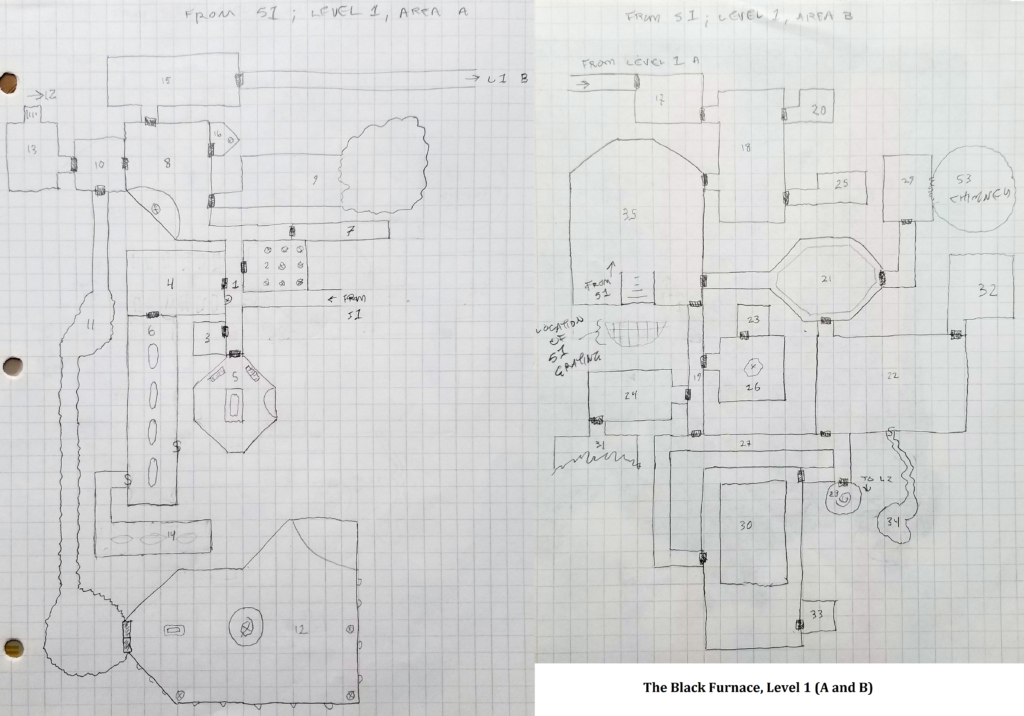First level of the Black Furnace complete
I’m quite enjoying #dungeon23 so far. Having 1/3 empty rooms is a fantastic safety valve, allowing me to bank the fire of inspiration for days when I’m feeling it. Although it’s now day 40, level 1 of the Black Furnace is “only” 35 rooms — because this dungeon has five entrances, and I wrote those […]
First level of the Black Furnace complete Read More »

